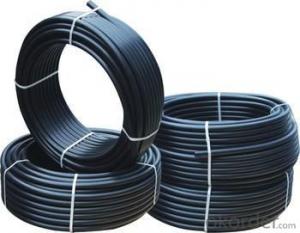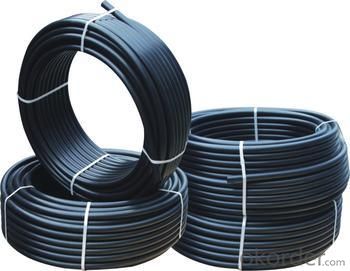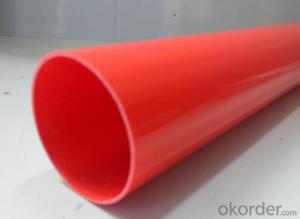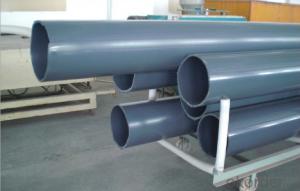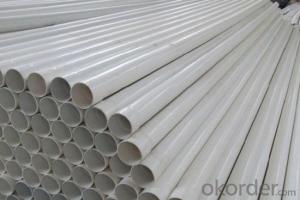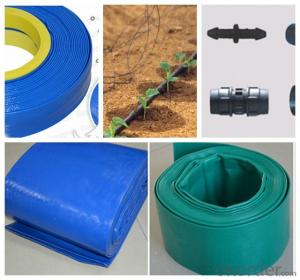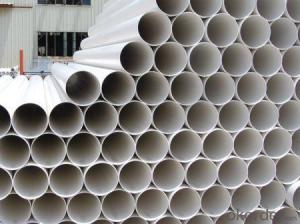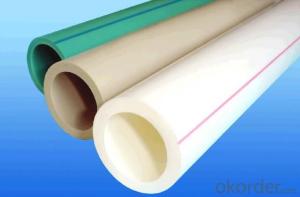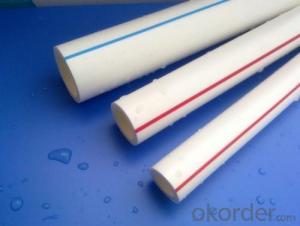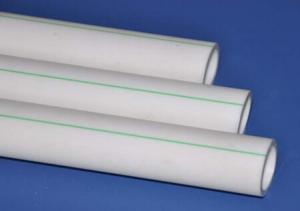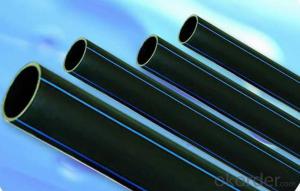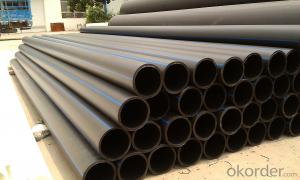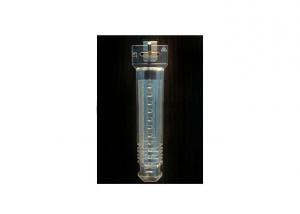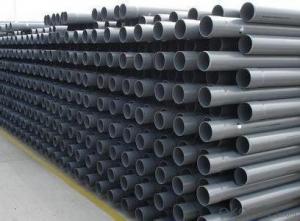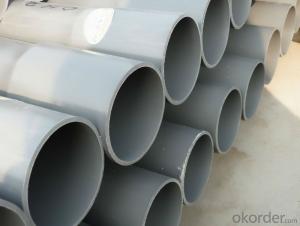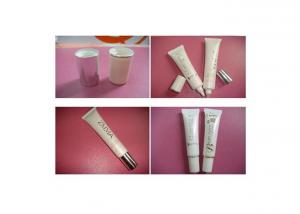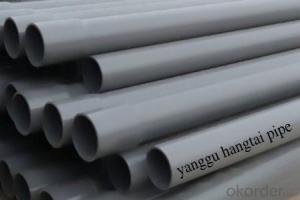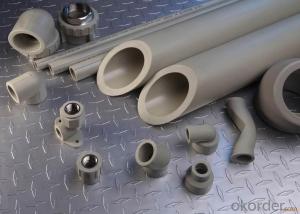Plastic Tubes HDPE Pipe ISO4427
- Loading Port:
- China Main Port
- Payment Terms:
- TT OR LC
- Min Order Qty:
- -
- Supply Capability:
- -
OKorder Service Pledge
OKorder Financial Service
You Might Also Like
Specifications
HDPE pipe
1.Model: DN16mm-DN1200mm
2.Material: PE80, PE100
3.Press level: 0.4MPa-1.6MPa
Features:
Model: DN16mm-DN1200mm
Material: PE80, PE100
Press level: 0.4MPa-1.6MPa
Color: black, with blue strip
Executive standard: ISO4427 EN12201 ASTMF714 AS4130 GB/T13663
Length: 4m,6m and 12m, or as your request
HDPE pipe Performance and Features:
1. Environmental Material.
HDPE is a kind of no-toxic, tasteless and unharmful chemical material, and HDPE PIPE, inherits those typical features nicely.
2. Good Flexibility.
When it is used in dredging pipe, the rubber flexible connectors can be saved because of its good flexibility.
3. Low Hydraulic Resistance.
The smooth inner wall make the water transportation capacity improve more than 30% under the same condition.
4. No Leakage.
The technics of hot-fusion and electric-fusion make sure the the strength of welding point is stronger than the body pipe itself.
5. High abrasion performance.
Its wear resistance is 4 times as the steel pipe.
6. Anti-corrosion and crack growth resistance.
7. Long lifetime durable in use.
50 years at least.
8. Economy
Low delivery, installation and maintenance cost.
HDPE water supply pipe application
1. Water pipe network system for civil engineering.
2. Urban and rural drinking water pipeline.
3. Agricultural irrigation pipe.
4. Other industries related to liquid transportation, especially for corrosive liquid.
- Q: Are plastic tubes suitable for use in the telecommunications industry?
- Yes, plastic tubes are suitable for use in the telecommunications industry. They offer various benefits such as flexibility, lightweight, and cost-effectiveness. Additionally, plastic tubes provide adequate protection for cables, allow easy installation and maintenance, and are resistant to environmental factors like moisture and corrosion.
- Q: How do plastic tubes compare to PVC pipes in terms of flexibility?
- Plastic tubes are generally more flexible than PVC pipes. While PVC pipes are rigid and inflexible, plastic tubes can bend and conform to different shapes and angles more easily.
- Q: I have seen one in a music video but i dont know what it called it makes the the voice sound electronic i think???
- it okorder /
- Q: Can plastic tubes be used for storing art supplies or materials?
- Yes, plastic tubes can be used for storing art supplies or materials. They provide a convenient and protective solution for organizing and transporting items such as paintbrushes, pencils, markers, and even rolled-up canvases. Plastic tubes are durable, lightweight, and often transparent, allowing artists to easily view and access their materials whenever needed.
- Q: How empty do you get the toothpaste tube before you will throw it out?
- I usually squeeze every last bit of life from it befor getting rid of it.
- Q: What are the advantages of using plastic tubes in the cosmetics industry?
- There are several advantages of using plastic tubes in the cosmetics industry. Firstly, plastic tubes are lightweight and easy to handle, making them convenient for both manufacturers and consumers. Secondly, plastic tubes are more cost-effective compared to other packaging materials such as glass or metal. This allows cosmetic companies to reduce their production costs and offer more affordable products to customers. Additionally, plastic tubes offer better protection against external factors like light and air, helping to preserve the quality and shelf life of cosmetic products. Lastly, plastic tubes are customizable, allowing cosmetic companies to design unique and eye-catching packaging to attract customers and differentiate their products in the market.
- Q: Can plastic tubes be used for promotional packaging?
- Yes, plastic tubes can be used for promotional packaging. They provide a convenient and attractive way to package and display products, allowing for customization with branding and messaging. Plastic tubes are lightweight, durable, and versatile, making them a popular choice for promotional packaging in various industries.
- Q: Are plastic tubes suitable for use in the pharmaceutical industry?
- Yes, plastic tubes are suitable for use in the pharmaceutical industry. They offer several advantages such as being lightweight, cost-effective, and resistant to chemical reactions. Plastic tubes also provide excellent barrier properties, ensuring the integrity and safety of pharmaceutical products. Additionally, they are easily customizable, allowing for precise dosing and administration. However, it is important to select the appropriate type of plastic tube that meets the specific requirements and regulations of the pharmaceutical industry.
- Q: What are the different shapes of plastic tubes?
- There are various shapes of plastic tubes available, including round, square, rectangular, oval, and triangular.
- Q: Which drain is more effective, plastic pipe or concrete drain?
- Plastic plastic PE. Good! And is suitable for pipelines with pressure. The connection with hot melt welding, good water tightness
Send your message to us
Plastic Tubes HDPE Pipe ISO4427
- Loading Port:
- China Main Port
- Payment Terms:
- TT OR LC
- Min Order Qty:
- -
- Supply Capability:
- -
OKorder Service Pledge
OKorder Financial Service
Similar products
Hot products
Hot Searches
Related keywords
